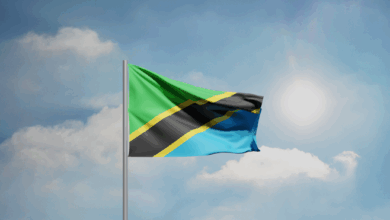
A hemorrhagic fever that damages the organs and blood vessels. Blood flowing from the eyes, mouth and ears.
The virus responsible for these gruesome symptoms, dubbed the Marburg virus disease, is amongst the most deadly pathogens ever, with a recent outbreak now claiming the lives of eight people in Kagera region, northeastern Tanzania – leading to concerns of a new pandemic.
Outbreak
The Marburg virus originated from the city after which it was named in Germany as a result of travel movements to and from Africa.
The World Health Organization (WHO) classified it within the same family of viruses that cause Ebola, another deadly hemorrhagic diease that has killed many on the African continent.
With cases of Marburg virus appearing in neighboring countries such as Rwanda and Burundi, doctors there have been warned to be wary of the virus, as its symptoms can appear suddenly.
These symptoms include severe headaches, fever, diarrhea, stomach pain and vomiting, according to the British newspaper Daily Mail.
Looming threat to Africa
The virus can be spread by touching or handling the bodily fluids of the infected, contaminated objects or infected wildlife, and is initially transmitted to people after prolonged exposure to mines or caves inhabited by fruit bats.
Health workers in Tanzania have reported about 66 cases of Marburg virus infection, about 80 percent of whom are health care workers, as well as 15 deaths so far.
The WHO warned that the Marburg virus has a mortality rate of 88 percent – meaning it can kill nine out of 10 people who contract it.
With no vaccines or treatments currently available, doctors in Tanzania are focusing on helping patients survive the infection.
A new pandemic?
WHO chief Tedros Adhanom Ghebreyesus earlier this week expressed the organization’s concerns about the emergence of more cases in the coming days despite improved disease surveillance.
The source of the outbreak remains unknown, he added and the delay in detecting and isolating cases, along with the ongoing tracking of contacts, indicates a lack of complete information about this worrying outbreak.
The regional risk is heightened by the strategic location of the Kagera region as a transit hub, with significant border movement of people to Rwanda, Uganda, Burundi and the Democratic Republic of the Congo, while some suspected cases are reported to be in areas close to international borders, highlighting the potential for the disease to spread to neighboring countries.
The WHO confirmed that the Marburg virus is not easily transmitted, and in most cases requires contact with the body fluids of a patient or surfaces contaminated with these fluids.
However, the danger lies in the possibility that an infected person is traveling and transmitting the infection to other countries.
Edited translation from Al-Masry Al-Youm




